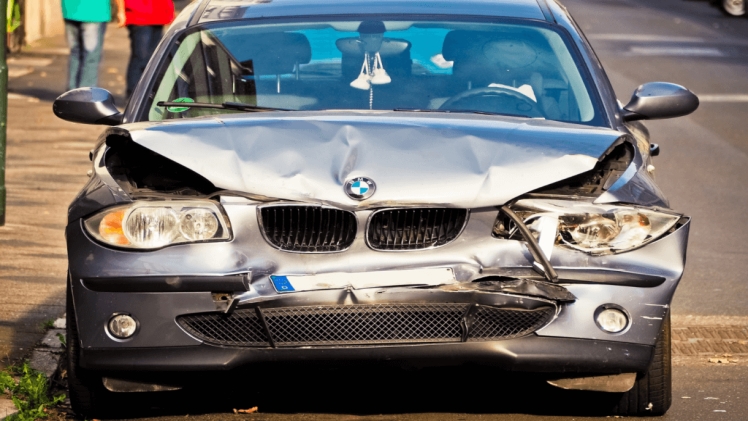Driving is one of those essential activities that takes you from A to B. But, the roads are very busy, and there are more cars than ever before. This can make it an unpleasant experience and there’s a lot of traffic. This can lead to road rage, rash decisions from other drivers and stress. Accidents are more likely to happen.
As a responsible driver, understanding the potential hazards on the road is essential for keeping yourself and others safe. In particular, you want to learn about the common types of non-fault car accidents and ways to minimise risk.
Rear-End Collisions
Rear-end collisions are a common sight on the road. These accidents occur when one vehicle strikes the rear of another. Some key points to consider:
Causes: These accidents often happen due to tailgating or distracted driving. Keep a safe following distance and stay alert. This way, if the person in front brakes, you’ll have enough of a stopping distance.
Real-life Example: Imagine you’re at a stoplight, and the driver behind you is texting. They fail to brake in time, and you end up with a rear-end collision. Know in this type of situation, this isn’t going to be your fault. You’ve stopped for the red light. Not only was the person texting behind you, but they weren’t leaving enough space to react. Indeed, this would be called a non fault accident, which would allow you to make a claim.
Junction Accidents
Junctions can be danger zones. These accidents typically happen at crossroads, and some factors that contribute to them include:
Running Red Lights: Drivers who run red lights risk causing collisions. Always obey traffic signals, and this stops a collision with another vehicle when it’s their turn to move.
Failure to Yield: Some drivers forget to yield the right of way, leading to accidents. If you forget to do this, it’s likely that the accident will be your fault and this can have a huge effect on your insurance.
Parking Lot Incidents
Parking lots seem harmless and something you use every day. But they have their fair share of accidents, such as:
Backing Out Issues: Drivers may not see you when you’re backing out of a parking space. You might not see them in time either if they’re hidden behind another vehicle.
Door Dings: Careless car door opening can result in damage to your vehicle. This can be frustrating. While making sure you’re parking in your lines is a way to avoid this, some people can be careless when opening the doors.
Sideswipes
Sideswipe accidents occur when two vehicles travelling parallel to each other make contact. There are reasons why this can happen, including:
Lane Changes: Failing to signal lane changes or not checking blind spots can lead to sideswipes. You always want to ensure that you’re looking before you move.
Avoidance Tips: Use your mirrors and signal your lane changes to avoid these accidents. Check your mirrors more than once and before making the move.
Pedestrian and Cyclist Accidents
Accidents involving pedestrians and cyclists require extra caution:
Risks: Failure to yield at crossings or intersections can lead to serious accidents with vulnerable road users. You always have to be careful and look around for potential hazards before moving off.
Safety Tips: Always be aware of your surroundings, especially in areas with pedestrians and cyclists. Check your mirrors and keep an eye on everything that’s happening around you.
How to Avoid Non-Fault Car Accidents
Defensive driving is your best friend on the road:
Safe Following Distance: Maintain a safe distance from the car ahead to give you ample time to react.
Stay Aware: Continuously scan the road, check your mirrors, and anticipate potential hazards.
Avoiding Distractions
Distracted driving is a leading cause of accidents. Stay focused by:
Minimising Distractions: Use hands-free devices for calls and avoid texting while driving. Remove your mobile device from reach if you think you’ll be tempted to check it.
Focus on the Road: Your undivided attention is crucial to stay safe.
Obeying Traffic Laws
Traffic laws exist for a reason, and you must ensure you know what they are and follow them:
Consequences: Running red lights, speeding, or disobeying stop signs can lead to accidents and penalties.
Responsible Behaviour: Always obey traffic rules and regulations for your safety and the safety of others. Keep yourself updated on changes made.
Vehicle Maintenance
A well-maintained vehicle is less likely to cause accidents:
Regular Maintenance: Keep up with vehicle maintenance, including brakes, tyres, and lights.
Safety Impact: Well-maintained vehicles perform better in emergencies and reduce accident risks.
Being Mindful of Weather Conditions
Weather can be unpredictable. Tips for driving in various conditions:
Adverse Weather: Adjust your driving to match the weather, whether it’s rain, snow, or fog. Don’t be afraid to slow down.
Safety First: Slower speeds, increased stopping distances, and cautious manoeuvres are essential.
Conclusion
In conclusion, understanding common types of non-fault car accidents and how to avoid them is crucial for safe driving. By practising defensive driving, staying vigilant, obeying traffic laws, maintaining your vehicle, and adapting to weather conditions, you can significantly reduce the risk of being involved in a non-fault accident. Stay informed, be responsible, and make safety your top priority when you’re on the road.

